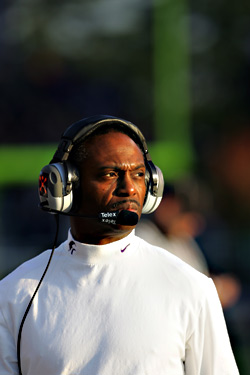Each day seems to bring news of yet another sexual abuse scandal in the Roman Catholic Church. Last week it was the the Archdiocese of Seattle’s turn, as it was hit with three lawsuits alleging sexual abuse by its priests.
What’s happening in Seattle and across the country is clearly the largest crisis ever to face the American Roman Catholic Church. But there may be 22,000 ways to solve the crisis, one for every priest who’s left the active clergy over the last few decades.
The trouble is that the majority of them are married.
But both Pat Callahan and John Shuster, who call themselves “married Catholic priests,” insist that they are part of that solution.
The solution, they say, to the church’s sexual abuse scandal, which worsens each day and has shattered the trust of lay Catholics from Boston to San Francisco. And the solution to the church’s other crisis, a chronic shortage of parish priests, a shortage so acute that 16 percent of American parishes without a full-time priest.
The two are part of a movement—at once underground and in plain sight—of married Catholic priests, men who renounced the church’s insistence on priestly celibacy in order to marry, have families, and live the lives of common men.
As far as some in the church are concerned, each is now a resigned priest, no longer able to administer Catholic sacraments such as matrimony and anointing of the sick. The Eucharist is out of the question.
Operating freelance ministries while often holding down day jobs, many of the married priests minister more as a matter of conscience than as a livelihood.
And even though they aren’t pulling lay people from the pews, the Catholic Church is not amused. That they are out there challenging nine centuries of church practice truly rankles.
“They are acting illicitly,” says Mary Ann Walsh, spokesperson for the U.S. Conference of Catholic Bishops. “Having left the priesthood by getting married, they have separated themselves from the ministry.” In effect, she says that any Catholic who thinks they receive spiritual succor from these nonclerical priests are instead getting a sham.
“That depends on what you think the church is,” says Shuster. “Is it the hierarchy or the people? The church is supposed to be about spirituality, not power. People are calling us. We have been called to this.
“One move that would buy the church a lot of credibility and fix the priest shortage would be calling back all the married priests,” says Shuster, who lives in Port Orchard, spent 20 years of his life in the church, and isn’t shy about pointing out that the officially sexless church was “busted for the most heinous thing you can think of— the anal rape of children.”
“We are the safe alternative,” he says. “We are used to watching out for our own children and we are sexually stable. We are the healthy priests who checked out of a sexually corrupt system to get married, and we can come back and clean it up.”
Such a move would require papal action and a revolution within the church itself. That’s because since 1139 AD, the rule in the church has been No Married Priests.
More serene than Shuster, Pat Callahan isn’t exactly standing in line to kiss the Holy Father’s ring.
He answers the door of his Leschi home wearing a brown-and-white flowered shirt and khakis. On a wall is a primitively carved wooden crucifix, a style popular in the 1970s. There are cut glass bowls on tables, light jazz on the stereo, and a view of Lake Washington from Kirkland to Mercer Island.
From this quasi rectory, he has carved out a wedding ministry for Catholics whom the church won’t otherwise marry: the divorced and those who want a wedding outside of a traditional church setting. Bluffs looking out over Puget Sound are popular.
He’s 6-foot-2 with violet-blue eyes and a refined folksiness so common to West Coast priests.
When he was 40, his godly work collided with a personal sense of loneliness. He’d been either a seminarian or priest since he was in the ninth grade. Then his loneliness sponsored a midlife crisis. It’s a pattern common to married priests, an awakening to the fact that 14- and 16-hour days of tending to the faithful would add up to one lonely man. Callahan became involved with a divorc饠who worked at St. Vincent de Paul’s in Federal Way, where he was parish priest. In 1983, Callahan left the church and the two were married.
There have been few regrets.
“The most idealistic thing I did as a priest was to resign,” he says. “If I couldn’t be there 100 percent, then I had to leave.” He says he’d watched priests try to nuance their attraction to women and the vows of celibacy and that it had reduced many to “bitter old men.”
“The tragedy for me was to be torn between two goods,” he says. “I was not burned out; I loved being a priest.”
He says that within six months of marrying, he felt he would be a superior priest because of seeing how the Gospel worked in the material world. “It was fine and well for me to sit behind my desk in the parish and pontificate, but I was out there in the trenches with folks.”
Initially, the trenches proved traumatic for Callahan. For someone who’d lived the trinity of chastity, poverty, and obedience, it was like being pulled through a knothole from the spiritual world to the material. (Shuster describes the process as stepping off a cliff.)
Callahan is coy about the sudden shift from virginity, calling it “exciting.”
For work, Callahan managed a senior living center in Bellevue and later was a real estate appraiser for Bank of America. Couples began to approach him to perform weddings, and Callahan complied.
He wasn’t the only priest in this position. In the Seattle area, there are 140 married priests, according to Callahan. He acts as something of a coordinator, publishing a small newsletter and membership booklet. Most of them don’t minister, but those who do stay busy. Brendan Gallagher, a 74-year-old married priest from Tacoma, performs 70 marriages a year.
In the Catholic Church, matrimony is governed by unbreakable rules: Marriages are only for the nondivorced and must be performed on church property. Many lay Catholics in the modern and liberal American church consider such rules as outdated as the Vatican’s stance on birth control. They’d rather not go through the church’s tortuous annulment process, and they’d like to be married on a beach, say.
That’s where priests like Callahan, Shuster, and Gallagher step in, aided by both church and civil law. Under church law, once you are a priest, you are always a priest, according to theological experts, and what’s more, if the faithful approach you and seek your services, you are bound to perform priestly duties. Washington law is looser than other states on who can perform marriages—technically, almost anyone could marry a couple, and the state requires no formal registration. (In Oregon, by contrast, you must be licensed and in good standing with your church.)
No one tracks how many marriages and funerals are performed by married priests, but it’s clear that hundreds of people use their services each year. What they’re getting is a matter for theologians, but many feel that they are getting a service in the Catholic tradition by metaphor, if not by fact. For his part, Callahan won’t offer more than weddings and funerals; baptisms, he says, are an induction into a spiritual community, and he doesn’t have a community of the spirit. Shuster is more aggressive; he’ll even do last rites (now called anointing of the sick).
No matter how married priests limit their work, the Archdiocese of Seattle isn’t happy with the services they render.
“Catholics who understand Catholic teaching and understand the sacraments know that it’s not officially recognized by the church,” says Bill Gallant, spokesperson for the Archdiocese of Seattle. “There’s a bit of false advertising.”
Gallant says, however, that the local church isn’t out to condemn anyone. Still, he says, because married priests aren’t official Catholic priests, the weddings and other services they offer don’t carry the church’s seal of approval.
“People know the difference,” he says. “We don’t have to pound them over the head with it.”
Many religious experts aren’t so fast to dismiss married priests.
Charles Curran, a priest and professor of human values at Southern Methodist University, says that married priests should be welcomed back into active ministry for the practical reason that the church should resemble the people of the church.
Others have different reasons.
William McInerny, a professor of theology and religious studies at Rockhurst University in Missouri, says that married priests would help reform the church by putting an end to celibacy. He says that celibacy is a tool that has been long used by the church hierarchy as an instrument of power over priests and as a means of creating “an unsavory distinction between those who lead the religious life and the laity.”
Few religious experts accept Shuster and Callahan’s claim that married priests would fix the church’s sexual abuse scandal. But they do allow that married priests could address the shortage of priests, a shortage that’s worsened over the last four decades.
In 1965 there were only 549 American parishes without a resident, full-time priest, according to the Center for Applied Research in the Apostolate. By 2001, the number had jumped to 3,151. There are 45,000 priests in the United States, a 23 percent decrease from 1965.
Two national advocacy groups trumpet the work of married priests. The 30-year-old CORPUS is something of a support group for the priests, while Rentapriest, which represents 2,700 married priests, is a referral service for those available to perform sacraments, be they matrimony or anointing of the sick.
On July 20, Voice of the Faithful, an influential lay organization, is holding a conference in Boston, an attempt to provide a forum for lay Catholics. The group expects 5,000 attendees and is pushing to make the church more accountable to the laity in the wake of the sexual abuse scandal.
The American Catholic Church is at a unique and treacherous point in its history, one where some Catholics are calling for a reformation.
Callahan knows he wants to play a part in that.
“This would be a much better church if it were drawing from married people,” he says. “For most priests, celibacy is a burden and takes a toll on their effectiveness. The bottom line is we need to perform sacraments, and restricting it to celibate males is not doing the job.”










